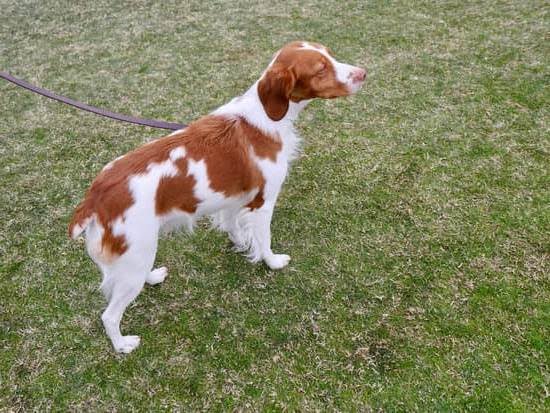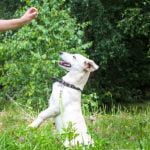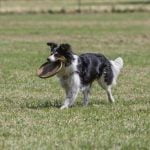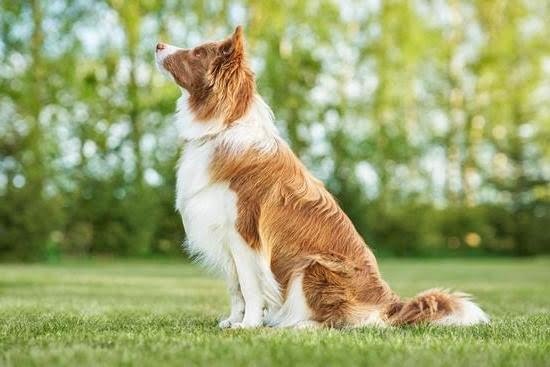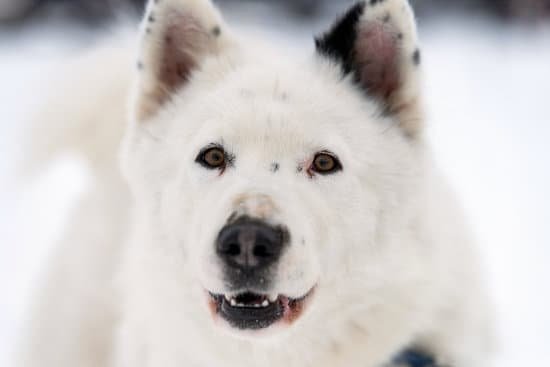Introduction
Separation anxiety in dogs is a common issue, with many pet owners struggling to help their pup overcome this difficult problem. It can be defined as an excess of distress or fear when the dog is separated from their owner or source of comfort. Dogs that suffer from separation anxiety may bark, whine, howl, become destructive, or exhibit other disruptive behaviors whenever left alone for even short periods of time. Many behaviorists cite excessive attachment to the owner as its cause. A lack of proper socialization with people and other animals during its formative stages is also thought to contribute to the development of this problem in some dogs.
Fortunately, there are ways that pet owners can train an anxious dog to be alone more comfortably and confidently. While it will take dedicated training over a period of time, most pups can make significant progress toward overcoming this issue if provided with patience and support. The following article explores methods for training an anxious dog to handle being left on its own without suffering panic or anxiety. These techniques range from providing comforting distractions while still present to slowly allowing gradual departures until long periods can be handled without distress. With patience, a loving approach, and good timing — any pup can have the assurance they need regarding time alone without becoming overwhelmed by fear or anxiousness!
Recognizing the Symptoms of Separation Anxiety in Dogs
It is important to recognize the signs of separation anxiety in dogs, as this can help you come up with a plan to train them better. Signs of separation anxiety in dogs include: barking and whining, going to the bathroom inside the home, digging, chewing on objects/ furniture, attempted escape or pacing, loss of appetite and depression-like behaviors such as lethargy or listlessness. Dogs can also become unusually clingy and desperate for your attention when you are around. These symptoms could be indicative of health problems too so consulting a vet is recommended.
Once you have familiarized yourself with the signs of separation anxiety in dogs, it is time to start training them to cope with being left home alone. Understanding that the underlying cause of their anxious feelings may stem from their need for routine and predictability is essential. Establishing an exercise routine – including walking or running every day – will give your dog a sense of security as well as some much-needed distraction from boredom which may bring about negative behavior when left unsupervised. You may also want to condition them slowly by introducing short periods away from home by leaving for 5 minutes at first, then increasing it gradually until they are comfortable being alone longer periods. Keep up the positive reinforcement by rewarding them with treats and praises each time they behave well through training – eventually your dog can learn identify cues for calming themselves down and might even begin to appreciate relaxed playtime when you are absent!
Understanding Why Dogs Become Anxious When Left Alone
Anxiety in dogs is a common behavior that can range from barking and whining to destruction when separated from their owners. Often the root cause of this type of anxiety is that the dog has grown to rely on his owner for safety and comfort, and as soon as you leave them alone, they become scared and anxious. Additionally, if dogs have been abandoned in the past or subjected to other types of mistreatment, this can also lead to feelings of fear and anxiety when left alone. Dogs may also suffer from separation anxiety if there is a change in their environment or routine that elicits anxiety such as an unfamiliar pet or family member around them. It is important to understand how a dog feels before taking any steps towards training it not to feel anxious when separated from its owners.
Once you are aware of your dog’s emotional state, it’s time to begin training! Start by slowly building up a level of tolerance by leaving your pup alone for short amounts of time while you are still home but out of sight – getting something at another room, going outside for quick walks etc. Make sure your pup is well exercised prior so that it is less likely to reflect its energy into destructive behaviors (chewing outdoors furniture). Reward him each time he remains calm throughout the entire time he was left alone. Gradually increase the amount of time you are out of sight until eventually he will be able to cope with longer periods away from home such as when left at daycare or boarding facilities. Consider providing him with calming aids such as treats infused with calming ingredients like chamomile or CBD oils and playing music inside which will help reduce stress levels too!
Learn How to Prepare Your Home Environment for Anxious Dogs
When training an anxious dog to be alone, the first step is to prepare your home environment for them. This should involve making sure that their food and toys are set up in a calming area away from any noises or disturbances. If possible, create a designated “safe spot” where the dog feels comfortable, this could include a comfy blanket or bed for them to sleep on. Additionally, it can also be helpful to leave treats and toys around the house for the dog as a distraction when they are feeling anxious about being alone. Finally, make sure that all access doors and windows are closed off and blocked so that there is no way for the dog to escape your home while you are away. By taking these measures, you can help create an environment of security and comfort which will make them more likely to be relaxed while you’re gone.
Proven Training Techniques to Help Calm an Anxious Dog
If you have an anxious dog that is distressed or uncomfortable when they are left alone, there are some proven training techniques you can use to help them. The first step to helping your pup manage their anxiety while they’re on their own is to create a special ‘safe zone’. This could be in the form of a crate, a bed or even just a certain corner of the house. Ensure that this area is comfortable and filled with plenty of toys and treats so that your pup has something fun and rewarding to do while alone. Make sure to give your dog plenty of time in the safe zone each day so that it does not become associated with punishment, but instead with security and comfort.
Next, you can start working on counterconditioning, which works by pairing the feeling of being alone with something positive. When leaving your pet alone, provide them with puzzles such as hollow toys stuffed full of snacks so they have something engaging to focus on rather than worrying about you being gone. With consistent repetition over time behaviors such as destruction or vocalization will start to reduce significantly due to the positive experiences your pup will receive while home alone. You can also use desensitization for more severe cases where slow exposure paired with calming cues can be very effective at helping dogs handle larger amounts of time without stress or panic. It’s important to note that these types of training require patience and consistency; it likely won’t happen overnight but if done properly it will produce long lasting results!
Discover the Best Rewards to Encourage an Anxious Dog
One of the most important steps in helping an anxious dog to become familiar with being alone is discovering which rewards are the most effective for encouraging your pup. Many dog owners use treats as rewards but it is important to determine what type of treat will be most effective for your particular pup. Some dogs may respond better to verbal praise and cuddles, while other pooches will seek out particularly delicious food items or their favorite chewy. Experimenting with different rewards can help you figure out what works best for your particular pup. Once you have found a reward that your anxious dog responds strongly to, you can begin training them on how best to cope when they are left alone. To get started, make sure the environment around your pup is comfortable and secure; this includes providing them with enough space while still allowing them access to their toys and blankets so they feel comforted. You should also introduce periods of alone time that increase gradually as your pup becomes more accustomed to the feeling of solitude. Start with just a few minutes of separation, then progress to longer intervals such as ten minutes or even twenty minutes – adding more time only when it’s clear that your anxious pup isn’t scared or uncomfortable anymore. As you gradually increase your pup’s solo time, you should provide them with treats or rewards just before leaving the room so that they associate being alone with a pleasant experience (e.g., receiving positive reinforcement). Additionally, during periods of prolonged alone time, it may be beneficial for owners to provide interactive toys like puzzles, Kongs etc., so that their pups don’t get too preoccupied by thoughts of loneliness or fear!
Discovering Mistakes to Avoid When Training an Anxious Dog
When it comes to training an anxious dog to be alone, it is vital to be aware of the potential mistakes you could make that can worsen the issue. If a dog associates punishments with your absence during the training process, this can cause more anxiety and apprehension in their mind. Additionally, punishing a barking or whimpering pup may seem like an effective way of quietening them in the short-term; however, this method can further cement their fear of being alone.
It is key to ensure positive reinforcement throughout the training process. Rewarding your pup for good behaviour with treats keeps them motivated and works much better than shouting or reprimanding them when they display anxious behaviour. To truly eliminate anxiousness instead of just managing it, gradually introduce a small period of separation into your pet’s day incrementally. Begin by exiting the room momentarily and rewarding them when they behave as desired, increasing the length of time away as they become more comfortable and relaxed. If your pup is exhausted from plenty of exercises and mental stimulation during your time together, chances are that they will be much less restless once left alone.
Conclusion
Staying at home alone can be a daunting prospect for dogs. If your pup is anxious when you leave, the simple yet effective steps above should help to alleviate some of their distress. As a general rule, build up the duration of time they spend alone gradually and reward them for handling the situation well. Additionally, it may be helpful to reduce any stressors that are present within their environment or provide chew toys or blankets that smell like you in order to keep them comforted when left alone. Ultimately, with patience and consistency uneasy dogs can learn to be comfortable on their own!
It is important to make sure that you do everything possible to ensure your anxious dog feels safe when left at home by themselves. Creating a safe environment not only helps them feel more secure but can also give them an outlet to expel pent-up energy during their time alone. Be sure to set some rules and boundaries as well as keep an eye on their behavior so you can address any anxiety-related issues before they become unmanageable. Additionally, providing your pup with extra love and attention before leaving can help ease their tensions and settle any worries they have about being away from you. Lastly, try incorporating calming activities such as therapeutic music into mealtimes so your pup has comforting mental stimulation while they wait for your return home.

Welcome to the blog! I am a professional dog trainer and have been working with dogs for many years. In this blog, I will be discussing various topics related to dog training, including tips, tricks, and advice. I hope you find this information helpful and informative. Thanks for reading!

